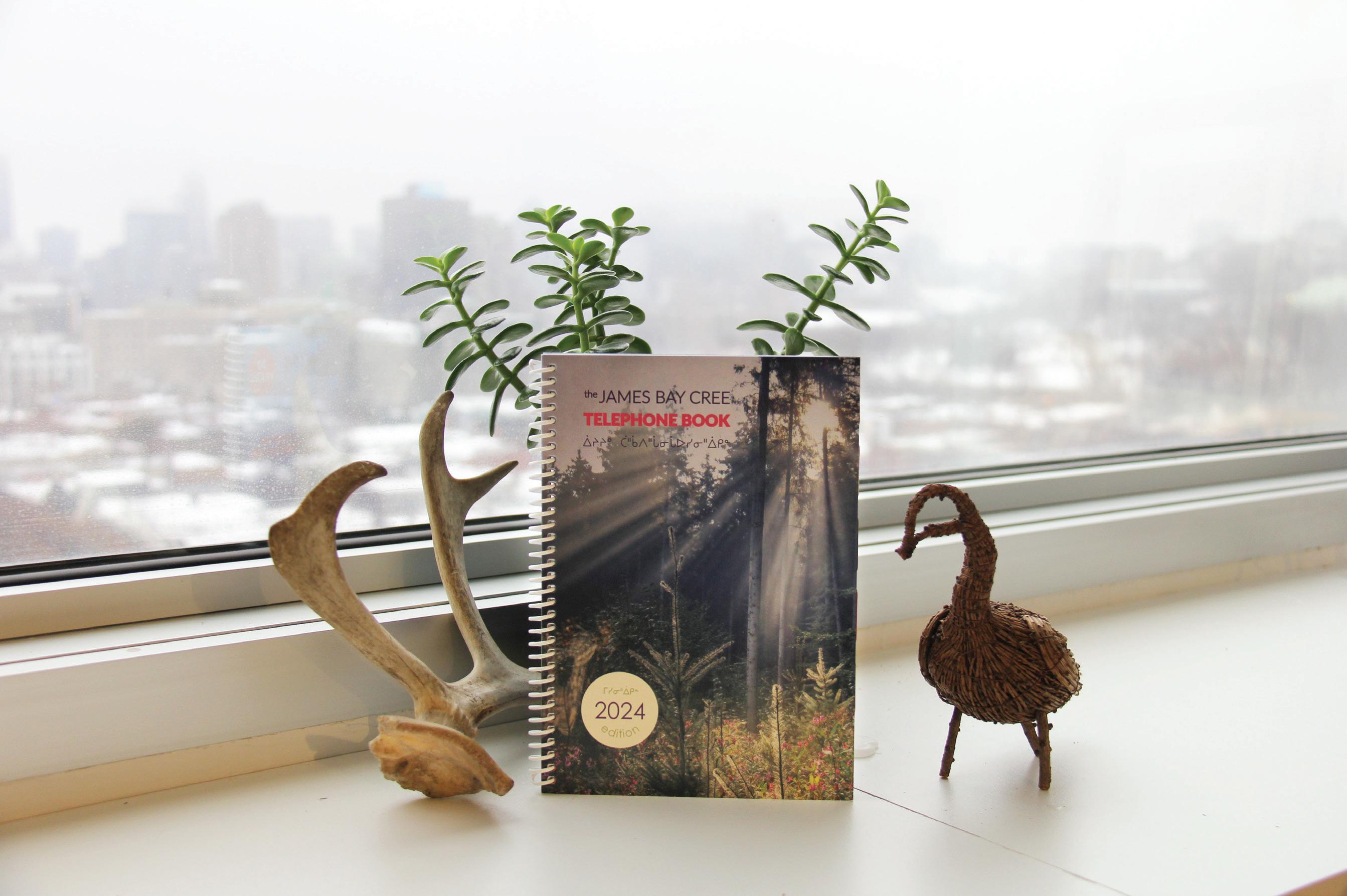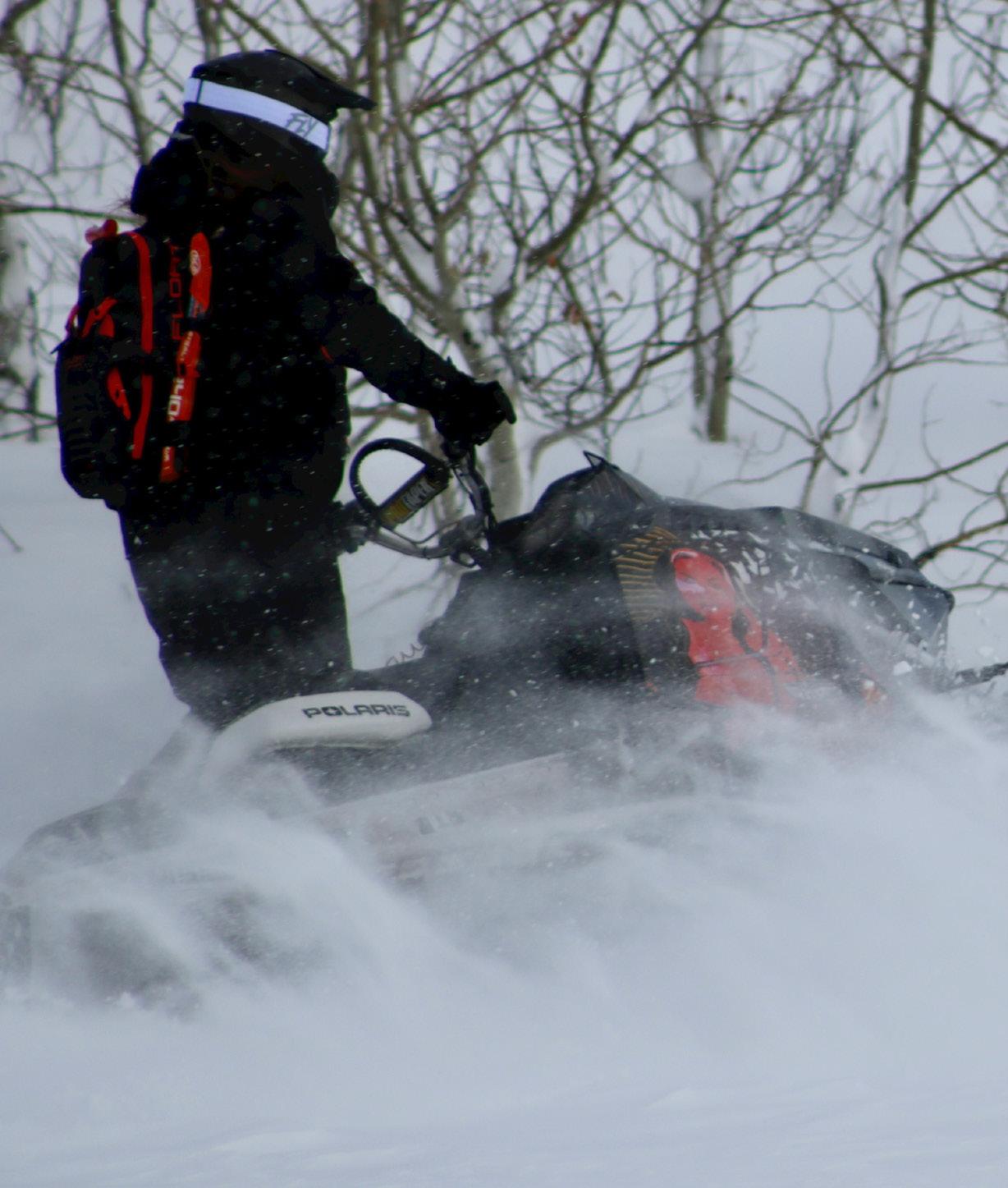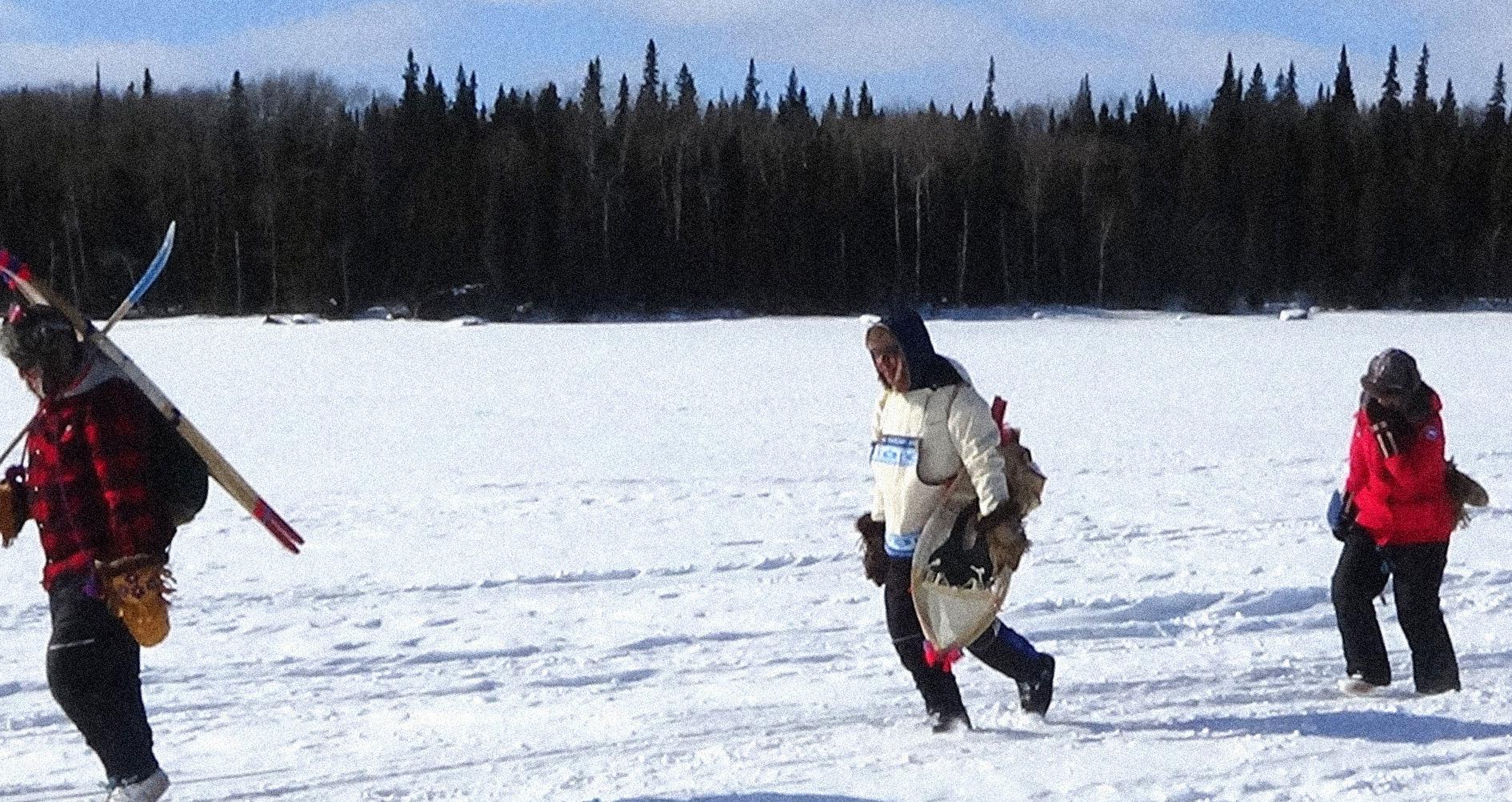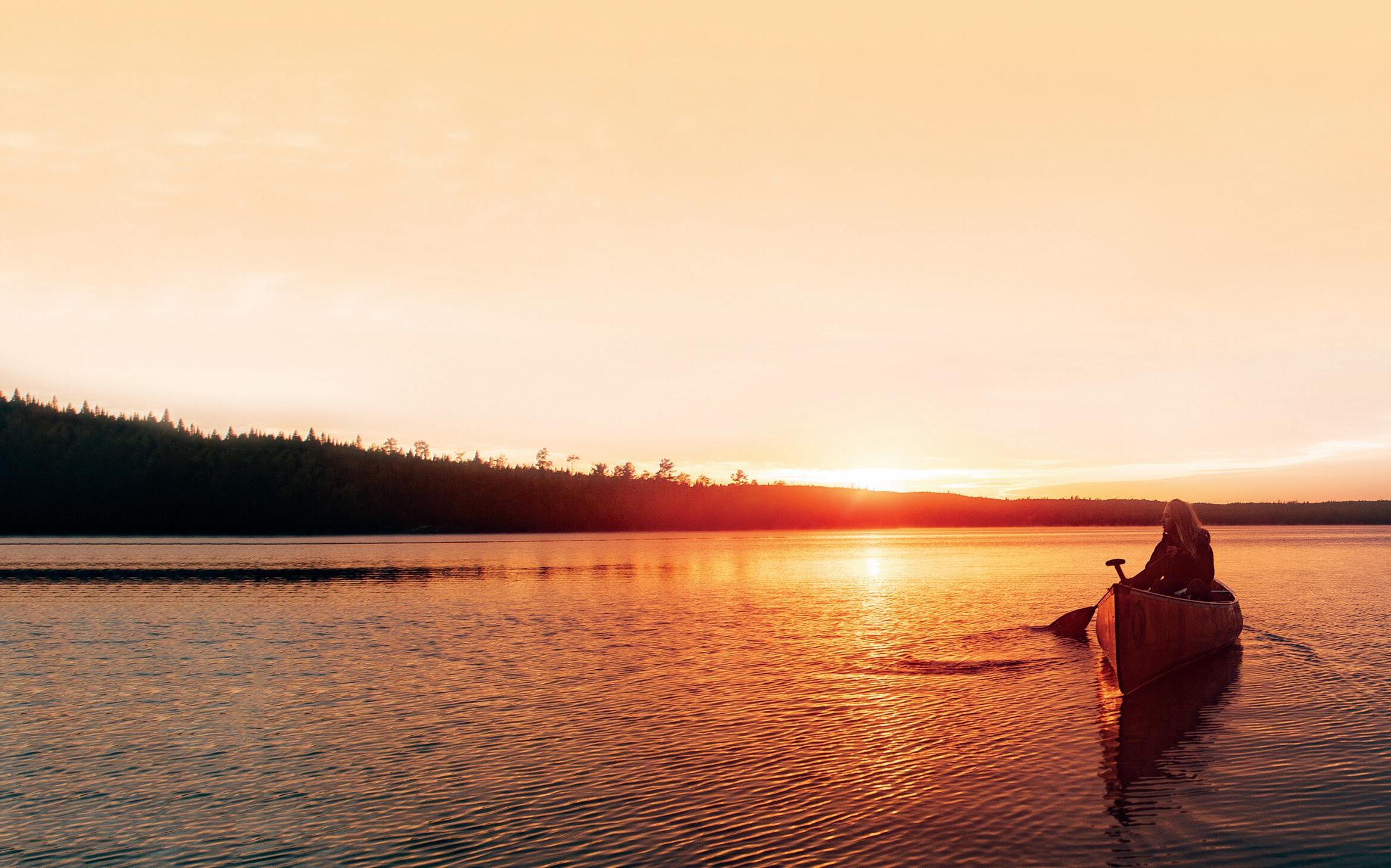

Also














Also











Leonard Peltier is the longest imprisoned Indigenous person in the United States. Even after almost 47 years behind bars he is considered a political prisoner by Amnesty International, the Southern Christian Leadership Conference, National Congress of American Indians, the Robert F. Kennedy Memorial Center for Human Rights, Archbishop Desmond Tutu and Rev. Jesse Jackson, among many others who believe he should be immediately released.
Shortly before leaving office, US presidents routinely grant pardons based largely on personal preference and political awareness. Seven presidents, beginning with Jimmy Carter, have come and gone since Peltier has been in prison.
Peltier was convicted for the deaths of two FBI agents who died in a 1975 shootout on the Pine Ridge Indian Reservation in South Dakota. It was the culmination of a series of events that began with the Wounded Knee occupation of 1973.
This three-year period of political violence turned Pine Ridge into an armed camp. The tribal chairman hired vigilantes; the infamously self-titled “GOONS.” It was their job to rid the reservation of American Indian Movement (AIM) activity and sentiment. This they did ruthlessly. More than 60 traditional tribal members and AIM activists were murdered, and many others were brutally assaulted.
Despite a large FBI presence, nothing was done to stop the violence even though evidence indicated GOON responsibility in most of the crimes. For the FBI, attacking AIM served their purpose as they considered the organization as a radical threat. The FBI involvement included supplying the GOONS with intelligence on AIM members.
AIM leader Leonard Peltier was asked by traditional people at Pine Ridge to support and protect those being targeted for violence. They set up a camp on a ranch owned by the traditional Jumping Bull family. On June 26, 1975, two FBI agents in unmarked cars followed a pickup truck onto the Jumping Bull ranch. The families immediately became alarmed and feared an attack. Shots were heard and a shoot-out erupted. More than 150 agents, GOONS, and law enforcement officers surrounded the ranch.
When the shoot-out ended, two FBI agents and one Native American lay dead.
According to FBI documents, more than 40 Native Americans participated in the gunfight, but only AIM members Bob Robideau, Darrell Butler and Leonard Peltier were brought to trial. A federal jury acquitted Robideau and Butler on grounds of self-defence.
Peltier was arrested in Canada on February 6, 1976. The United States presented the Canadian court with affidavits signed by Myrtle Poor Bear stating that she was Peltier’s girlfriend and allegedly saw him shoot the agents.
In fact, Poor Bear had never met Peltier and was not present during the shoot-out. Soon after, Poor Bear recanted her statements and said the FBI threatened her and coerced her into signing the affidavits. Three teenaged Native witnesses also testified against Peltier. As with Poor Bear they all later admitted that the FBI forced them to testify. Still, not one witness identified Peltier as the shooter.
The US Attorney prosecuting the case claimed that the government had provided the defense with all FBI documents concerning the case. To the contrary, more than 140,000 pages had been withheld in


their entirety. An FBI ballistics expert testified that a casing found near the agents’ bodies matched the gun tied to Peltier. However, a ballistic test proving that the casing did not come from the gun tied to Peltier was intentionally concealed.
The jury, unaware of those facts, found Peltier guilty. Judge Benson sentenced Peltier to two consecutive life terms.
Following the discovery of new evidence obtained through a Freedom of Information Act lawsuit, Peltier sought a new trial. The Eighth Circuit ruled, “There is a possibility that the jury would have acquitted Leonard Peltier had the records and data improperly withheld from the defense been available to him in order to better exploit and reinforce the inconsistencies casting strong doubts upon the government’s case.”
Still, the court denied Peltier a new trial. Almost half a century later, we should not forget this man, who will turn 80 in September. His story is a symbol of centuries of injustice.
CONTACT




Afatal snowmobiling accident involving two young Cree riders cast a sombre mood over the community of Mistissini as it prepared for its annual snowmobile competition.
Nianne Joy Coonishish, a 16-year-old rider who was renowned for her skill and loving personality within the racing community, died in the crash February 3.
Coonishish had a promising racing career, winning her first-ever race in the 2023 NMK Junior Girls Cross Country Championship. In her six races, Coonishish won an unprecedented three times and finished on the podium in all six.
Her father, Richard Coonishish, said Nianne was a “natural” at the sport and that her supernatural racing spirit would always hold a special place in the Cree racing community.
“The memory of Nianne will last a lifetime ... and will shine through eterni-
ty,” read a post from Eeyou Eenou Cross Country Racing United. The organization called for the entire 2024 Cross Country Championship racing season to be dedicated to Nianne and her number 88.
“The memory and spirit of Nianne Joy is riding along with us from high above. She is here to make sure that the cross-country racing community will carry her memory and her spirit from start to finish.”
Matthew Blacksmith was the other rider involved in the accident. He suffered a shattered skull and left eye but is recovering and in stable condition in the Montreal Children’s Hospital.
“I keep having to remind him where he is and what happened. He was speaking about racing again and I told him, you don’t need to worry about that right now,” said his mother Evadney Blacksmith, who
“The memory and spirit of Nianne Joy is riding along with us from high above”
-Eeyou Eenou Cross Country Racing United
is staying at the hospital with her son as he recovers.
It was Matthew’s first season of racing, having saved up the money to buy the sled and equipment by working alongside his mother.
“I want to encourage people to wear his number #15 and honour Nianne’s #88. People can buy the stickers created for Matthew and Nianne so we can keep them in our memory forever,” Evadney said.
The accident occurred on the ice of Mistassini Lake, where first responders believe that the sun’s glare impaired the vision of the two riders who were involved in a collision.
An investigation was opened and quickly closed, deeming the crash an unfortunate accident.
The competition continued under an adapted schedule. A celebration of Nianne’s life was held on February 10 before the competition began. This allowed for a moment of silence for Nianne, an opening prayer for those grieving, a banner hanging, and a memorial ride in her name.
Stickers created in Nianne’s memory were distributed to help the community heal and remember the life and energy she brought to everything she did.


Chisasibi:
Eastmain:
Mistissini:
Nemaska:
Ouje-bougoumou:
Waskaganish:
Waswanipi:
Wemindji: Whapmagoostui:
819-855-2120
819-977-2400
418-923-2661
819-673-2400
418-745-2260
819-895-2126
819-753-2770
819-978-3300
819-929-3796



During the final public hearing, Kebaowek councillor Justin Roy said the project is like building an outhouse beside a well. The site is bordered by wetlands that drain into the Ottawa River, the water source for millions downstream. Citizens are also concerned that the underlying bedrock is porous, with the groundwater table very close to the surface.
Indigenous-led research revealed a population of threatened eastern wolves that uses the site along with three active dens of black bears. The surrounding wetlands provide habitat for endangered Blanding’s turtles, various bat species and at-risk migratory birds.
More than 140 municipalities passed resolutions of opposition or serious concern. The Assembly of First Nations Quebec-Labrador stated the CNSC’s decision goes against the rights of First Nations and environmental protection. At the recent protest, Chief Haymond was flanked by leaders of the Green Party and Bloc Québécois.
“Not only is this project a clear example of environmental racism that threatens the drinking water of many communities in the area, but CNSC also breached its duty to meaningfully consult Kebaowek from the beginning of this project,” said Green Party leader Elizabeth May.
When Bloc leader Yves-François Blanchet pressed Prime Minister Justin Trudeau on the project as First Nations leaders looked on from the public gallery, Trudeau responded that approval was handled by the regulator and wasn’t a political decision. Haymond has questioned the CNSC’s independence, noting two commission members have ties to the nuclear industry.
While the Algonquins of Pikwakanagan consented and entered into a long-term relationship agreement with CNL and site owner Atomic Energy of Canada Limited, the 10 Algonquin communities in Quebec have long opposed the project. Some see a similar situation happening in northwestern Ontario where the Wabigoon Lake Ojibway Nation is one of two potential hosts for a giant underground nuclear waste site.
“It’s not fair for one community to decide the entire outcome for all the other nations who share the same waterway,” asserted Neecha Dupuis from Ojibway Nation of Saugeen. “How the government deals with First Nations communities is to pick one, then divide and conquer.”
Discovering that these projects are proceeding with little awareness or resistance, Dupuis connected with groups like Environment North and Northwatch
before helping found We the Nuclear-Free North to defend the rights of Indigenous people to their waterways while raising public awareness.
Chief Rudy Turtle of Grassy Narrows First Nation declared unequivocal opposition to nuclear waste “in our region, and anywhere upstream or upwind of our Territory” in a February 26 open letter.
“The water from that site flows past our reserve and into the waters where we fish, drink and swim,” stated Chief Turtle. “The material that you want to store there will be dangerous for longer ... than anything ever built has lasted. How can you reliably claim that this extremely dangerous waste will safely be contained for hundreds of thousands of years?”
Relieved to see the Algonquins defend their waterways, Dupuis circulated pamphlets “to let the Algonquin people know they’re not alone” at the Parliament Hill protest.
“I love the Kichi Sibi,” Dupuis told the Nation. “The river has a voice and it’s up to us to listen to her and uphold her rights as a being. For the fish, the animals and every single being that lives on that water. The love for the land will be the leadership for our next generation.”

The Innu First Nation of Pessamit will hold a referendum on a controversial $45-million agreement it recently signed with the Quebec government and Hydro-Québec. The preliminary deal would end the community’s ongoing $500 million lawsuit against the Quebec and Canadian governments over the 16 dams HydroQuébec has built in its territory since the 1950s.
Hours before Premier François Legault arrived in Pessamit for the February 15 signing ceremony, demonstrators set up a blockade, allowing only essential goods and community members into the First Nation. Local police dismantled the blockade shortly before Legault entered the community.
“We’re asking elected officials and chiefs to hold a referendum, to open the community hall to the people,” said an organizer. “The meeting and agreement between elected officials from Pessamit and the province shouldn’t have been held behind closed doors.”
Pessamit Chief Marielle Vachon agreed with the demonstrators’ demands, stating that the community would hold a referendum to decide whether to continue, cancel or change the agreement.
Quebec Indigenous Affairs minister Ian Lafrenière said that he understands the disagreement within the community, because Pessamit community members “have been living with the negative impacts” of Hydro-Québec and may be worried that the agreement would cover up past grievances the community has with the company. He said that that it may take between 12 to 24
months to come up with a complete agreement.
The community’s lawsuit claims that Pessamit has experienced massive flooding and ecosystem destruction since Hydro-Québec dams and stations were built without community consent.
Dr. Stanley Vollant, born in Pessamit and now working as a physician in Montreal, said people are worried this agreement could mean even greater destruction of the land. “Pessamit deserves more,” said Volant. “I have mixed feelings about it because I thought it’s going to be more than $45 million. To me, that amount is not enough.”
Bell Media’s recent announcement that it is laying off 4,800 employees is drawing sharp criticism. The move follows previous layoffs last spring, resulting in closure or divestment of nine radio stations.
This is despite parent company BCE Inc.’s operating revenue of $6.7 billion, up from $6.44 billion the previous year.
Heritage Minister Pascale St-Onge accused the company of reneging on its promise to invest in local news for smaller communities after receiving over $40 million in federal subsidies. “They are not going bankrupt,” St-Onge emphasized. “They’re still making bil-
lions of dollars. They’re still a very profitable company.”
The layoffs reignited debate about the government’s recent legislation, including the Online Streaming Act and the Online News Act, which abolished certain licensing fees and provided financial support for broadcasters. St-Onge said these measures were intended to assist companies like Bell Media, whose job cuts will disproportionately affect smaller communities.
The layoffs mean noon newscasts at all CTV stations except in Toronto would end. It is also scrapping its 6pm and 11pm newscasts on weekends at all except Toronto, Montreal and Ottawa. As well, “multi-skilled journalists” will replace correspondent and technician teams reporting to CTV National News, signalling a negative effect in quality and production of news reporting.
Around 100 people gathered in a Kashechewan First Nation school February 21 for the announcement of a new Indigenous-led Marine Conservation Area on the James Bay coast.
Omushkego Wahkohtowin (meaning “people with the right relationship to the land and waters”) will be managed by a partnership between Parks Canada and Mushkegowuk
Marine Conservation, involving eight Mushkegowuk First Nations, Fort Severn, and Peawanuck First Nations.
The project aims to protect the James Bay watershed, providing habitat for migratory birds, polar bears, belugas, and sensitive flora and fauna. The project also offers benefits by providing employment and educational materials.
However, there is disagreement in the community over the project’s pace, with negotiations on its final design and “Indigenous-led” operations expected to take six months to two years.
Lawrence Martin, Mushkegowuk Marine Region manager, said a negotiation team will be assembled and ready for talks in April. “For some people, it seems like we’re rushing. But we’ve been at this for the last 50 years,” Martin said, pointing to resolution after resolution to pressure Ottawa for movement.
Still, Martin and other leadership point to the opportunity to protect the James Bay watershed and flora and fauna sensitive to climate change and development.
The fate of the project depends on agreements between the federal government and the nine First Nations, with Ontario’s involvement remaining uncertain. Waters are under federal jurisdiction in Canada, which poses a challenge as Ontario’s Conservative government has not engaged in conservation discussions.
Cree communities are organizing Winter Active activities to encourage regular physical movement and healthy lifestyles during the colder months. The Cree Health Board hopes the campaign will help build a stronger Cree Nation and prevent conditions like diabetes.
“If you can get people to go out and exercise in the wintertime, it’s more than likely they’ll exercise in the summertime too,” said Wally Rabbitskin, the planning, programming and research officer (PPRO) of physical activity in regional public health. “It’s not necessarily sports – it can be just having fun in the snow with your children.”
Rabbitskin’s department provides funding for communities to start their own programs and participation prizes like t-shirts or tuques. His radio announcements regularly promote physical activity for developing a happier lifestyle, building self-esteem and achieving your goals.
“Over the years, there are a lot more people exercising,” Rabbitskin said. “The more we promote physical activity, the more people will think about it and get out there. You’ll be in a better mood, sleep better and socialize with people doing the activities.”

Rabbitskin suggested fun activities with friends or family members to benefit physical and mental health while setting a positive example for others in the process. Some communities promote intergenerational participation through winter carnivals and challenges, inviting families to do activities with their children at school with healthy meals provided.
As walking becomes increasingly popular, new trails have opened in different communities, sometimes with lights for safety. Mistissini plows its track and field area and organizes a weekly walk to Murray’s Lodge about eight kilometres away, every Saturday from January to late March.
“There’s a trail on the side of the road and another on the ice with security to monitor their safety,” explained local programs administrator Simon Metabie. “People can use their snowshoes or skis. We serve a light lunch, and they socialize.”
The walk draws between 10 and 30 participants, depending on the weather, and serves to prepare those interested in joining the annual Journey of Wellness. This year, four men are on the holistic healing journey intended to help people overcome personal issues through traditional Cree pursuits on the land.
Halfway through this journey, the men will join women around km 590 on Route 167 North near the Otish Mountains and walk to the community where a feast and entertainment will be waiting. The group’s return is a highlight of Mistissini’s culture and wellness weeks March 11-22.
A variety of workshops and activities will be held over these two weeks. Learning opportunities include working with crooked knives, making traditional baby rattles, sewing, Elder abuse awareness and a local Cree language conference. There will also be sliding on Tommy Hill, bingo and Cree hymn nights.
Waskaganish is hosting a regional land-based program March 4-15 at MacLean’s Camp, called “WiichihiisuuHelp Yourself.” Leveraging the healing power of the land and supported by the residential school fund, the initiative intends to help participants overcome residential school trauma and substance abuse problems through cultural teachings, sharing circles and one-on-one counselling.
“During those two weeks, every second day we’ll have an outdoor activity – hunting, ice-fishing, snowshoe walks,” said Jamie Stevens, who works for the Wiichihiiwewin Centre. “We do a lot of cultural-based programs, anything that


can help with mental health. People who struggle with their mental health need to do some kind of physical activity.”
Wiichihiiwewin programming has been so successful that they’re increasingly asked to collaborate with other organizations and facilitate workshops in different communities. For mental health week at the end of March, they will organize traditional activities for elementary school students, including outdoor cooking, games and a snowshoe race.
In February, the Wiichihiiwewin Centre started a snowshoe walking club that plans to meet every Saturday at 1:30pm until the snow melts. With funding from Healthy Horizons, the initiative has drawn participants aged six months to 73 for treks across the river and forest trails.
“It helps people, especially non-Native people in the community, connect with others in Waskaganish,” said Stevens. “They feel safer in a group. It helps them relieve stress. We have extra snowshoes for people who don’t have them.”
The club has proven to be such a valuable social outlet that people meet for indoor activities when it’s too rainy to snowshoe. Its logo is “Let’s Fight Diabetes,” which is promoted through exercise, fresh air and healthy snacks.
The Wiichihiiwewin Centre hosts a steady stream of events throughout the year, from art journaling and beading workshops to summer camps. Last August, they held a four-day event called the Sharing Cree Culture and Traditional
Festival where community members could go from station to station, participating in traditional carving and tool making, paddle making and cooking workshops.
With so many athletic activities organized by each community’s youth and recreation departments, there are no shortage of options for staying active all year. Besides the always popular hockey and broomball leagues, volleyball is seeing growing interest in some communities.
“Sports are extremely important,” Deandra Spencer Tebiscon, captain of Chisasibi’s girls team told CBC. “It helps the kids get together and helps them go outside their comfort zone. They get to travel to different places – we’re all kind of just a big family.”
While winter activities across Eeyou Istchee continue to expand, uncertain ice conditions caused by climate change are increasingly impacting snowmobile and walking journeys. Citing recent mild weather, the Cree Nation Youth Council (CNYC) decided to cancel its Regional Winter Journey planned March 18-29.
This journey would have brought together 60 to 80 youth, including guests from other First Nations and Inuit youth organizations, for a snowshoe walk from Eastmain to Chisasibi to nurture cultural exchange and network building. The CNYC board of directors will determine whether to hold their Regional Winter Journey next year or to have a Regional Canoe Brigade this summer.



ᐄᔨᔨᐅᒡ ᑳ ᐅᒋᒫᐅᐱᔅᑎᐦᒡ ᒋᔅᑯᑎᒫᒑᐎᓂᔨᐤ (FNEE) ᒥᔨᐙᐅᒡ ᐋ ᑎᐦᒀᔨᒡ ᒋᔅᑯᑎᒫᒑᐎᓐᐦ ᐋ ᓃᑳᓂᓯᓈᓂᐎᔨᒡ ᐋ ᒌ ᑭᓂᐙᐱᒫᑭᓂᐎᒡ ᐄᔨᔨᐅᒡ ᐊᓂᔮᔨᐤ ᐋ ᐃᔑ ᓂᑎᐙᔨᐦᑎᐦᒡ ᐄᔨᔨᐤ ᐋ ᐄᑎᔅᑳᓈᓯᒡ᙮










The Palais des Congrès de Montréal hosted the 79th edition of the Montreal International Auto Show January 19-28. This massive complex featured cars on display on three levels, with several big brands showcasing their latest concepts and production-ready vehicles to the public.
This year, Tesla brought most of its electric vehicles to the show. The Cybertruck, a futuristic full-size electric pickup, captured the attention of many visitors. With a stainless-steel exoskeleton that reduces dents, damage and corrosion, Tesla claims this durable vehicle can go anywhere, helped by an adjustable air suspension with a clearance up to 17 inches. The base rear-wheel-drive model costs around $77,000, while the top-tier Cyberbeast model costs about $130,000. Although the precise release dates are still unknown, pre-orders are being accepted.
VinFast, a Vietnamese automaker, displayed their all-electric cars during the
event. The company currently operates in BC, Ontario and Quebec. Although the electric VF Wild is still only a concept, it already indicates Vinfast’s orientation for future models. This midsize pickup offers an eight-foot maximum storage area, a fold-down wall, and a ton of goodies. It may be an attempt to compete in the all-electric truck market with Tesla.
The compact, two-door electric Vinfast VF 3 is a somewhat larger version of the basic Smart car that can accommodate narrow parking spaces and streets. This might replace your typical city car with a 200-km range on a single charge.
Vinfast VF 8 production model sales are progressing along with the big players. With a 425-km range and a 15.6-inch touch screen that can be fully customized, this car gives you access to Smart Services for managing your home or place of business. In addition, it has a heated steering wheel, ambient lighting and vegan leather seats. The standard model costs about $56,000.


Toyota displayed most of its top-tier cars. For the past 10 years, Tacoma has been a part of the mid-size pickup truck market in Canada. With a powerful 465 lb.ft. of torque and up to 326hp, the all-new i-Force Max hybrid is a sight to behold. This robust truck is built on the TNGA-F global truck platform and shares it with the Tundra, Sequoia and Land Cruiser.
The new 2025 Camry comes with a hybrid powertrain and has a bolder look than its predecessor. This 2.5L 4-cylinder engine works with two electric motors and a battery. Combined, it delivers a decent output of 22hp with the front wheel (FWD) and all-wheel drive (AWD) options.
The completely off-road capable Lexus GX550, which competes in the premium market, is made to seem like a modern muscle SUV while maintaining the iconic Lexus aesthetic. At the exhibit, guests could experience all the comforts and cutting-edge technologies of this luxurious SUV firsthand. The potent 3.5L V6 twin-turbo engine produces an outstand-
ing 8,000 lbs (about 3,628.74 kg) of towing capacity in addition to an amazing 349hp.
The Mitsubishi plug-in hybrid GT-Premium S-AWC comes with a twin-motor PHEV system combined with a 2.4L gas engine, giving a combined total range of 687km. The base GT model starts at $58,198. The new Nissan Ariya is a 100% electric crossover with a maximum electric range of 490km when fully charged. This $55,835 compact SUV can deliver 389 hp and can hit 0-100 km/h in 5.1 seconds.
Among the Korean cars, the new Hyundai Santa Fe Hybrid with the H-shaped headlights is more spacious than the previous version and will certainly stand out on the road. The boxy design and the straight body lines resemble the Land Rover Defender. Customers can choose either the hybrid electric or plug-in hybrid based on their driving preferences. Autonomous driving technology with its Highway Driving Assist 2.0, which utilizes sensors and map data to provide Level 2 autonomous driving, automatic
braking and acceleration, as well as overtaking cars in front of you when the system is activated.
The Kia EV9 is the next level of innovation in Kia’s electric lineup after the launch of the smaller EV6 in 2021. The EV9 embraces the full capability of an SUV in enhanced EV packaging. The bold and futuristic exterior design and the spacious interior give customers a renewed riding experience when driving off-road or on city streets. It also comes with a towing capacity of up to 5,000 lb. (2,267 kg) when properly equipped. EV9’s Digital Pattern Lighting Grille, and now your phone can be used as the secure key that unlocks the doors and starts the vehicle, a feature that will be of great convenience. The car has a driving range of approximately 450km, and the base model is priced at $63,167. In the below-$40,000 range, Kia lined up the Forte, Seltos, Sportage and Sorento with gas variant options.
From the North American fleet, GM group dominated the pavilion with



Chevrolet, GMC, Cadillac and Buick models. The huge GMC Hummer EV pickup did not go unnoticed. It boasts up to 571km of electric range on a full charge. This truck can deliver a whopping 1,000 hp and 11,500 LB-FT of torque and can hit 0-60 mph (0-97 km/h). When you are behind the steering wheel, the look and feel of every gadget, including the 13.4-inch diagonal infotainment system, gives a solid truck feel while handling it. This high-end electric truck base version starts at $134,224.
Cadillac Escalade IQ is currently in the preproduction stage, and it is built on GM’s Ultium electric architecture loaded with modern tech. GM claims that when using a 350 kw DC fast charger at a public station for 10 minutes, this full-size electric SUV can drive up to 160km. This beast offers three rows of seats to comfortably accommodate up to seven passengers. It has a 200-kWh battery, can give a maximum driving range of up to 724km, and produces 750hp and 785 lb.-ft. of torque.
Buick unveiled its 2024 Envista in the compact SUV category. It only has the gas model and comes with a
decent host of tech in it. The features include an UltraWide 11” diagonal information screen, advanced safety and driver assistance features, and active noise cancellation inside the cabin. It seats up to five and has an estimated highway mileage of 7.4L/100 km. The pricing below $30,000 will attract customers concerned about rising oil prices and inflation.
The Ford Mustang Mach-E Rally SUV got a special spot among the Ford lineup. The vibrant yellow paint and black stripes on the front hood gave it a distinct appearance in the crowd. This performance SUV claims to have a range above 350km when fully charged.
Among the top-end luxury sports brands, this year Luc Poirier exhibited their top-end 31 Ferraris, starting from the model year 1967 to 2023, at the show. The
most expensive was their first hybrid vehicle, the Ferrari Aperta. This limited-edition car is powered by a 6.3-litre V12 engine and an electric motor, producing a combined power output of 949hp. It can hit a maximum speed of around 349 km/h with a list price of $7.7 million.
The orange-coloured McLaren’s 570S coupe with butterfly doors looked very aerodynamic, had a twin-turbo V8 engine, and incorporated race-driven technologies. It can hit 0-100 km in 3.2 seconds. The listed price ranged from $199,960 to the high-end GT trim at $324,605.
Overall, this year’s show was more energized with renewed enthusiasm in the market since the Covid pandemic two years ago. Given that Canada has announced plans to phase out gas-powered cars and trucks by 2035, it is quite

likely that the new rules will make it difficult for gasoline or diesel-powered passenger vehicles to enter the Canadian market soon.
The industry seems to be focussed on carbon-neutral clean energy technology. The Toyota Mirai, the Hyundai Nexo and the Honda Clarity were all designed and produced to run on hydrogen fuel. Certainly, there are hiccups in improving the technology and installing fuel networks across the country. It seems major companies are still researching and refining ideas and working with policymakers to develop alternate fuel options other than the currently poised battery technology, which promises sustainable and environmentally friendly growth. Only time can tell.










Happy




























Study shows lightly regulated logging threatens forests and wildlife
by Patrick Quinn, Local Journalism Initiative ReporterAs a new study declares major changes are needed to protect biodiversity and wildlife in Quebec’s boreal forests, the Cree and other First Nations are increasingly resistant to forestry activities in the region.
In the scientific journal Land, researchers analyzed data over 40 years to show the cumulative impacts of commercial logging. Intact old-growth forests most crucial to caribou and other species were found to be dwindling to “a vast scatter of patches” across “a highly anthropically disturbed forest.”
While the industry promotes its sustainable practices, plantation efforts focus on “commercially desirable” trees that maximize wood production. Researchers stated patches of older forests should be set aside and protected to restore caribou habitat and strengthen the landscape’s integrity.
At a “Future of the Forest” roundtable with the Ministère des Ressources naturelles et des Forêts (MRNF) on February 15, Kebaowek Chief Lance Haymond alleged that MRNF consultations are “superficial” with decisions made unilaterally. Essipit Innu Chief Martin Dufour accused Quebec of seeing forests only “as an economic engine” and called for more wildlife protected areas.
While wildlife habitat management directives were to be part of the 2002 Paix des Braves agreement’s Adapted

Forestry Regime, Cree leaders express growing frustration that these are yet to be implemented. Ahead of the 2023-28 five-year-plan, the Cree Nation Government agreed to give Quebec until December 2023 to submit these guidelines and harmonize only one year of forestry planning until they were in place.
However, the province blamed last summer’s forest fires for failing to ful-
fill this promise, offering proposals the CNG deemed insufficient. In November, Grand Chief Mandy Gull-Masty informed the MRNF minister that the CNG will postpone participation in future harvesting consultations until allowable cut calculations adequately consider the loss of wildlife habitats caused by the fires.
“Nobody ever thought forest fires would affect 36 out of 62 traplines in
Waswanipi,” said Allan Saganash, a forestry consultant in Waswanipi’s Joint Working Group. “We have to calculate the disturbance. Any trapline’s protected area affected by more than 40%, they have to stop cutting.”
Dealing with forestry development since the early 1980s, Saganash has witnessed a formerly pristine territory carved up by clearcuts and 34,000km of roads, scattering wildlife and contaminating waters. An abundance of non-Native structures popping up without consent prompted the creation of a Cree land-use map.
Treaty rights now regulate these encroachments and impose limits on unchecked forestry: 3.1A of the Paix des Braves states that planning must

consider the Cree way of life. But does it? As the community most impacted by forestry, with nine of the agreement’s 15 management units, Waswanipi’s consultants have extensive knowledge of Cree rights and the frustrations of local tallymen.
“They don’t hear what the tallymen are saying, but I do,” Saganash told the Nation. “MRNF planners and forestry companies do not understand the Cree way of life. I’m not afraid to say they’re breaching the agreement when they don’t apply the wildlife directives.”
With too many of their identified wildlife areas logged to fragmentation, 50 of 56 tallymen rejected the new five-year plan. Besides the absence of special guidelines for habitat protection, the consensus among tallymen is that logging and road construction are excessive. Many also reject scarification practices that produce only rows of jack pine and spruce.
“The birch, aspen and shubbery that sprouts up naturally after a forest fire are considered weeds and plowed over,” explained tallyman Paul Dixon. “Forestry causes a lot of kill zones, not only the trees but the roots that were there thousands of years underground. The animals don’t go there.”
While the province claims that forestry harvests help moose populations, a 2008 study demonstrated that this species depends on mixed deciduous stands, buffers around waterways and large forest corridors to move between seasonal habitats. The Cree also use deciduous forests as firebreaks while sawmills seek only highly flammable coniferous woods.
“The old growth forest the companies are going after were about 100 years-old, like Cadillacs,” said Dixon. “The tree plantations they’re doing now are like Mr. Bean’s car. For wildlife, it’s no different between a plastic tree or spruce seedling.”
With wildfires burning 15% of forests managed under the Paix des Braves, a total of 23 traplines in Eeyou Istchee will be closed to further logging for two to 20 years depending on the disturbance. Quebec’s chief forester was forced to recalculate the allowable cut, reducing it by 17% this year as harvesting pressure intensifies on the remaining traplines.
Companies will be required to continue salvaging burnt wood this year in
the unfinished blocks transferred from last summer when they were ordered to stop cutting in green areas. Limited by current road access, Saganash believes it’s impossible for companies to fully follow the provision that prioritizes 70% of the fire-impacted area for logging.
With fires destroying an area unimaginable to negotiators of the Paix des Braves, the Cree argue it’s even more urgent to instill wildlife directives. After Quebec rejected the 34 measures proposed by the CNG last year, interim measures to protect moose habitats were requested but also rejected. As the gap widens between forestry and tallyman interests, grievances are mounting, and some tallymen are refusing negotiation altogether.
“There are so many things to be worked on but nobody’s resolving these issues,” lamented Saganash. “I almost feel the documentation I do is useless. Everything is so lopsided – even forestry companies are there at the consultations.”
Escalating disputes with the MRNF cause more tallymen to go through a conciliation processes with the CreeQuebec Forestry Board, wherein a conciliator makes recommendations and the Minister eventually designs a decision. While a previous process involving the Cooper trapline was unsuccessful, Cree dissatisfaction is so widespread that a legal battle may be looming.
Last summer’s fires will cast a long shadow on the forestry industry, likely impacting the next decade of annual planning. Saganash believes that reaching a mutual agreement for development will require the province and industry to first acknowledge the significant disturbance that fires caused to the Cree way of life.
“People will still go in the forest where it’s burnt and rebuild their cabins,” said Saganash. “There are areas that are still green (where) only the spruce and jack pine really burned. It will take five years for moose to come back – that’s if they don’t cut the trees and ruin the soil by scarifying it.”

Restoration of abandoned MidCanada military sites reaches Eeyou Istchee
by Patrick Quinn Local Journalism Initiative ReporterAbandoned former military sites of the Mid-Canada Line are finally getting cleaned up in Eeyou Istchee. The initial work planned for this summer will focus on smaller sites near Chisasibi and Whapmagoostui.
Completed at the height of the Cold War, the Mid-Canada Line was a series of unmanned radar bases built about 50 kilometres apart along the 55th parallel as an early warning system against Soviet bombers. However, development of inter-continental ballistic missiles made it obsolete even as it became operational in 1958. The line was abandoned in 1965, to be replaced by Distant Early Warning sites in the Far North.
During decades of lobbying by First Nations to address the decayed bases, federal and provincial governments argued over who was responsible for the costly cleanups. While sites in all other provinces have already been removed, Quebec will finally begin work on its 42 sites this summer, led by the Cree, Inuit and Naskapi nations where the remains endanger local ecosystems.
“The first step of the cleanup is to remove the physical debris,” said Kristy Franks, an environmental advisor at the Cree Nation Government. “After, there will be soil remediation because in some cases the land has been contaminated by fuel drums that leaked or old batteries left behind.”
The seven sites deemed easiest for the pilot project are located near waterways that simplify removal by helicopter, float plane or boat. Among the four under Cree responsibility, three are on

Whapmagoostui traplines and one is on the trapline of Chisasibi tallyman Reggie Scipio at Seal River (CH-7).
Scipio had his first meeting with the Mid-Canada group in February 2023, when planning for the work and budget began along with CNG and Chisasibi representatives. As site rehabilitation expert Mathieu Préfontaine estimates the Waapiskuuchii site can be completed in 14 days, preparations are already underway for securing the necessary supplies and 8 to 10 workers.
“The plan from the start was it’s on Cree territory and the Crees can do their own cleanup,” Scipio told the Nation “On this site, it’s bedrock so there’s not really any chance for contamination. There are no machines needed – it’s basically manpower to cut the pipe and put it all together in those big white concrete bags for the helicopters.”
After helicopters transport the material to the community, trucks will take it to treatment centres. Whapmagoostui cleanups are more complicated because of its lack of road access. Once the debris is removed, specialists can measure the extent of soil and water contamination.
On this relatively smaller site, there was a pump station with a pipeline that went to the shore where ships would
pump up fuel. A substantially bigger job awaits at another part of Scipio’s trapline, Cape Jones, which still features two tall radar stations, remnants of buildings, huge fuel tanks and an abundance of 45-gallon drum tanks.
“They said Cape Jones will be a two-year job, but we think it’s going to be more,” said Scipio. “They didn’t really get the full story in consideration of what the Elders witnessed. My dad saw a bigger pond filled with 45-gallon drums as much as possible, then they just covered it.”
Scipio provides regular updates about the project to his 89-year-old father, Harry Scipio, along with an uncle and other concerned Elders. Around 1953, Harry Scipio was out hunting for seals by dogsled when he saw the first helicopter fly into Cape Jones. His brother Simon went with Daniel and Sandy Snowboy a few days later and discovered there was going to be work done.
“People started going there and were hired to do small construction on the camps,” Scipio explained. “During the winter, they would get some food when they’d visit. My dad worked there – he doesn’t remember if it was a week or two, but it was $82.”
When the Mid-Canada Line was decommissioned, detection antennas that were sometimes taller than 100 metres were dismantled to eliminate aviation hazards. More valuable materials were removed in the 1970s. After the sites were ceded to Quebec, Indian Affairs opened outfitting camps where many Cree worked as guides.
Growing up, Scipio remembers hunting near the radar station for ducks and

site on Bear Island, located 60 km northwest of Chisasibi. The two-year cleanup estimated at $11 million removed a variety of metals, barrels, batteries and toxic soil full of polychlorinated biphenyls.
“Visually it looked very different,” said Scipio. “A lot of contaminated soil was shipped out. Probably now everything is settled down and growing back – the land will start replacing what was damaged.”
A site at Ontario’s Polar
The two-year cleanup estimated at $11 million removed a variety of metals, barrels, batteries and toxic soil
snow geese. At a nearby lake where the birds landed, people were fishing and setting up nets when they noticed 45-gallon tanks in the water and all around the lake.
“They didn’t really fish after that on that lake,” recalled Scipio. “I’m sure it’s contaminated now with the rust and everything and some had fuel in them. I’m sure the wildlife was affected because they’re all over there, especially in the winter.”
About 15 years ago, Scipio saw the results of restoration efforts when he worked a few weeks at a Mid-Canada
Bear Provincial Park was planted with native species while monitoring ensures the recovery of the third largest wetland in the world. Scipio looks forward to similarly restoring his trapline’s ecological integrity.
“I know it’s going to take time to restore the land, but we’ll do our part to make the land as clean as we can,” Scipio said. “Our main concern is for the future generations to hunt there, to have it as clean as possible for them. Where the wildlife will roam with no chance for contamination.”

Here’s another edition of the Nation’s puzzle page. Try your hand at Sudoku or Str8ts or our Crossword, or better yet, solve all three and send us a photo!* As always, the answers from last issue are here for you to check your work. Happy hunting.
Crossword
ACROSS
1 Brazilian dance
6 Wild guess
10 Silent film star Lillian
14 Golf shoe feature
15 Stash away
16 Golden rule word
17 Insurance seller
18 Like noteworthy days
20 Beaten-up
22 Apprentice doctor
23
25 Like many a bikini
28
PREVIOUS SOLUTION:
Solution to Crossword:
by Margie E. Burke
To
For



or several months, my overworked dryer was cranking out a sloppy thumping sound. I wondered if I should get a new one or fix it myself. I decided to try repairing it, so I went on YouTube to find help. Sure enough, within minutes of browsing I came across a Canadian site that seemed to be trustworthy. It was quite informative, and I was able to deduce my needs by the thumping sounds alone and quickly ordered a repair kit. As its delivery by post took several weeks, I did some online studying.
Finally, the package arrived, but I let the noisy dryer continue for a few more weeks before the annoying sounds pushed me into repair mode. I slowly dismantled the dryer, as the video warned me to watch out for sharp edges. Oh yeah, don’t forget to unplug it.
After removing the screws and fasteners, I managed to get the drum out without any real problem and quickly found the source of the maddening thumping – a large, tightly wound ball of hair. I figured it was about time to clean the entire machine and my vacuum cleaner sucked up at least 20 bucks in change and a small garbage bag of lint. It was actually fun.
After a thorough cleansing, I replaced everything from the repair kit and, voila! The dryer purred with a quiet, smooth sound, and a large grin appeared on my face. It stayed for quite a while as I had to admit I did a good job, albeit many months later. I even got a cramp trying to pat my
Nonetheless, the dream of being the friendly neighbourhood appliance repairman involves immense risks
back a few more times than I needed to. The family noticed too as the old stove was pointed out and I agreed to take on that job. This time I won’t wait a few months, as doing this kind of repair work is greatly satisfying.
Now, if that circumstance was multiplied to everyone who owns an old dryer or any appliance, I could quit my day job and spend more time collecting change and charging three times as much as my salary. But I decided that it could be a risky venture as dealing with lint all day is a health hazard and I’ll end up looking like Mr. Clean. Though I must admit that I am halfway there [don’t forget the rock-hard abs, Mr. Orr – editor].
Nonetheless, the dream of being the friendly neighbourhood appliance repairman involves immense risks. Like having to repair the vacuum cleaner because it’s too full of money or scraping out gooey black stuff from a washing machine. Or worse, etching the burnt-out window on the oven and inhaling odours of just about everything it has cooked since day one.

WHEN
It does have its charm, if you don’t mind the foaming chemicals that can melt your rubber safety gloves.
I guess it’ll remain a fantasy, until the next repair kit shows up in my mailbox. But there could be a future in it. I could get rich using the same keep-the-change strategy as the proud owner of a laundromat with hundreds of hours of maintenance and repair experience.
That dream has a crease in it, I must confess. I cannot fold clothes – it’s impossible. Having faced that reality at home, I thank the stars that I didn’t become a laundromat king. At some point, I would have to fold something and instantly lose business due to bad reviews on social media.
I am still proud of not throwing out a perfectly salvageable appliance and spending a few thousand bucks in the process. So, until the stove bursts into flames or when my new repair kit shows up via snail mail, I will be there to boost my self-esteem again.
TO YOUR TAXES, THE BEST ANSWERS COME FROM US.
Extreme cold weather is part of life every winter on the James Bay coast.
The cold was normal for my parents who were both born during a time when people didn’t have very much. My late father Marius Kataquapit was a trapper and hunter who learned to live and thrive on the land from the time he was a child.
Whenever we put on modern parkas with new linings and features to keep us warm, dad often reminded us that he didn’t have much to wear for warmth when he was growing up. Back then, he said that he was lucky to have any kind of durable outer jacket and that underneath it he simply wore many layers of any clothing he could muster.
I once found a thin little parka to use as a work jacket one very cold winter day. Dad looked at the flimsy parka and commented that this was the kind of clothing he wore all winter when he was young and that he was happy to have quality winterwear once he aged. He knew the secret to staying warm was in layering so he knew I would be warm enough that day.
The cold was something our people relied on for their survival. In the summers, the muskeg is an impenetrable landscape. The bog is too dangerous because one could sink down and drown in the murky water. At the same time, it’s impossible to use a canoe through the thick bush and overgrown swamps. Even if you could find a way to travel across the muskeg, the summer wilderness is filled with biting insects that can drive a person mad. The only safe way to travel in this territory in the summer months is on the rivers and the great James Bay waters.
We Cree look forward to the freezing temperatures that provide benefits that aide our survival. The ice and snow become a solid mass and all that is needed are a pair of snowshoes and a sled to move around. A hunter or trapper can cover hundreds of kilometres over the snow in the winter. For decades people have been using snowmobiles.
Things have changed drastically. The James Bay coast has had unusually

If anyone is still wondering if climate change exists or is happening, there is no better proof than the early melting of the ice roads
mild weather this year to the point that the annual ice roads are now difficult to maintain. The ice road builders rely on temperatures far below zero to create thick layers of ice that can support heavy vehicles. There have been cold days this winter, but they have been separated by periods of unusually warm weather that either prevented further freezing or even started melting the winter landscape.
Dad was an ice road builder, and he started the family transport business. My brothers now manage part of the ice road and the family business along the coast. My dad said that years ago, they relied on the rivers safely freezing with thick ice before Christmas and they knew it would stay that way until late March. In extremely cold years, we could count on almost four months of ice road use. This past year, the ice road season started late for regular traffic, and it looks like it will end early. Cars and trucks are getting stuck in slush, water and melting snow in January and February, which was unheard of 10 years ago.
The ice roads have been almost unusable for heavy transport trucks. These huge transports are the most important vehicles for the remote coastal communities as they bring in vital supplies. My family and friends recently reported that at one point, a convoy of transport trucks had to be parked in Fort Albany on their way from Moosonee to Attawapiskat because the ice road had become unsafe for them.
Climate change is affecting the lives of people in the North. Although life is difficult in the extreme cold, the fact that we could rely on consistent temperatures every winter meant that we could plan our lives accordingly. The shorter, warmer winter season is affecting how
the James Bay Cree travel across the land. The lack of consistent snow, ice and cold has meant hunters and gatherers are in more danger every year to travel to their traditional family lands. The warming environment has also meant that remote communities are losing access to the winter ice road which provides important heavy shipments of material and goods that are prohibitively expense otherwise.
If anyone is still wondering if climate change exists or is happening, there is no better proof than the early melting of the ice roads on the coast of James Bay.




